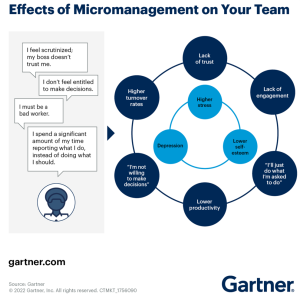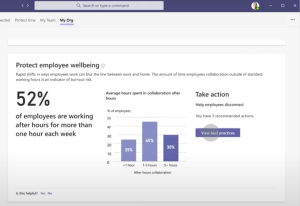Would privacy best practices make workforce surveillance less creepy?
By Andrew Sandico | October 20, 2022
Workforce surveillance is an emerging threat to a person’s privacy and there are limited ways to protect employees.

With the rise of available platforms for employee data, there is more opportunity to measure employee’s activity at work and their productivity. This monitoring of employee activity at work has been defined as workplace surveillance and these new measurements create risks of employee’s privacy since the data can easily be misused. New data sources are becoming more available to do workplace surveillance such as video recordings, pictures, monitoring keystrokes, or counting mouse clicks. All these examples potentially create risk of incorrect measurements for evaluating worker productivity (what employees produce at work) due to missing context. Although it is possible to measure workforce productivity through surveillance, should we?

[6] Examples of Workplace surveillance methods from the NYPost.
The Bad….but some Good?
During the COVID pandemic, many employees went through one of the largest social experiments that was unplanned for many companies. Specifically, employees began to work from home with limited physical availability for managers to see what their employees were doing. Due to this rise, many businesses and managers explored options to better understand what their workers were doing and there was strong interest in measuring their employee’s productivity. Some of these examples include having a platform which could measure their employees working time of when hitting keystrokes, but for some occupations, work isn’t measured by typing but by other activities such as discussions with a customer or talking to a colleague at work about a project. A few key areas of concern to highlight are:
- Intrusion– Leveraging a privacy framework such as Solove’s Taxonomy, workforce surveillance could impede a person’s privacy by gathering more information than needed. When a platform is using an employee’s camera they can pick up events that could be used against them. For example, a manager seeing a lot of children in their employee’s camera might determine that specific employee as being less productive compared to another worker that don’t have children in the background.
- Discrimination – Data pulled from multiple sources without the appropriate context could inaccurately classify employees into categories (called predictive privacy harm or the inappropriate generalization of personal data). For example, if a marginalized demographic group has a lower key stroke average to other groups due to a small sample size, that group could be inaccurately categorized.
- Micromanaging – Per Gartner’s research, they have found that micromanaging has negative impacts on employees such as making them less engaged, motivated, and/or productive [7]. With workforce surveillance, this would only be amplified by technology due to a perceived constant monitoring.

[7] Gartner Diagram of micromanagement impacts on a team
Although there are concerns, is there a gain for the subject? On the flip side, even with all these risks there is feedback of positive reasons for workforce surveillance. Examples include leveling the performance evaluation in companies to be more scientific vs subjective relationships. Per the Rise of Workplace surveillance podcast from the New York times [1], females particularly expressed positive feedback for this since it gave them empirical evidence on their work performance vs where other male counterparts might be subjectively given higher performance results due to relationships. For others that appreciate seeing their work quantified, they stated the benefit from seeing their own measurements to either validate their work as an accomplishment or help them be more productive. Balancing all these concerns, will privacy best practices make workforce surveillance less creepy and more beneficial?
How Privacy Can Help
Respect for a person is key. Leveraging the Belmont Report as a privacy framework, using data to help the employee or by giving aggregated themes to a manager to improve as a leader can help with development. Development for an employee is using data and synthesizing it to help nudge them on their work practices. Imagine a Fitbit for your work, where there are reminders of how to manage work life balance. For example, if you set your work hours from 9-5 but you always find yourself responding to emails at night those few emails can quickly add up to a few more hours of work. These nudges can help remind you of working extra hours and reduce the risk of burnout. For managers, they are also employees with development as well. Understanding the impact of a manager sending a late email to an employee could lead to extra hours of working in the night. Although easier for the manager to send at the moment, the good of understanding this behavior could help the manager change their work habit which would reduce their employee’s burnout. Products such as Viva built into Microsoft 365 is an example of how data can be used by a manager for their development while maintaining the privacy of the employee [5]. Viva provides nudges to managers on some of their influences on their employees’ work habits which a manager can then adjust.

[5] Example of how products like Microsoft Viva help managers understand their employee habits to help them lead their team.
Workforce surveillance is a slippery slope with limited privacy safeguards today, but with emerging platforms and stronger interest from businesses, appropriate privacy policies increase the possibility to use the data for the good of employee development and not for measuring performance. Using this data for performance is often labeled as weaponizing since it can be used as a way to justify giving someone a lower bonus, not giving a promotion, and/or terminate them. Without these privacy guidelines it will be very possible for companies to use the same data for incorrect use. Which brings another dilemma to platform companies that are sources of this data, would they sell the data that they collect from their platform as a service to other companies that do want to use that information for weaponizing. This additional risk of platform companies aggregating this information is another reason to have these companies have privacy by design embedded into their work.
Conclusion
The risk of workforce surveillance poses a major risk to a person’s privacy but if done correctly for the benefit of the person (employee) there are rewards. With meaningful privacy best practices that are followed, the benefits of workforce surveillance could outweigh the risks.
References
[1] The Rise of Workplace Surveillance – The New York Times (nytimes.com)
[2] Workplace Productivity: Are You Being Tracked? – The New York Times (nytimes.com)
[4] Management Culture and Surveillance
[5] Viva Insights: what is it and what are the benefits? | Creospark
[6] ‘It’s everywhere’: Workplace surveillance methods now common (nypost.com)
[7] Micromanaging Your Remote Workers? Act Now to Stop Yourself. (gartner.com)
